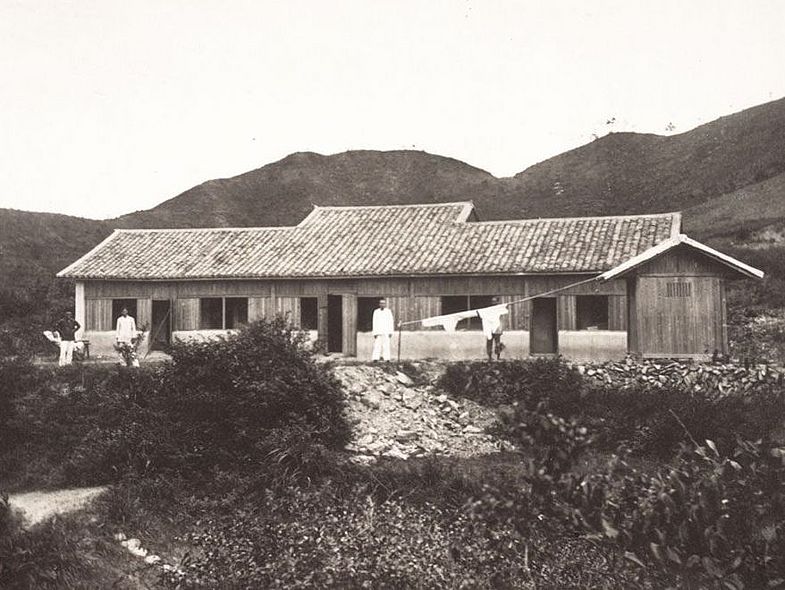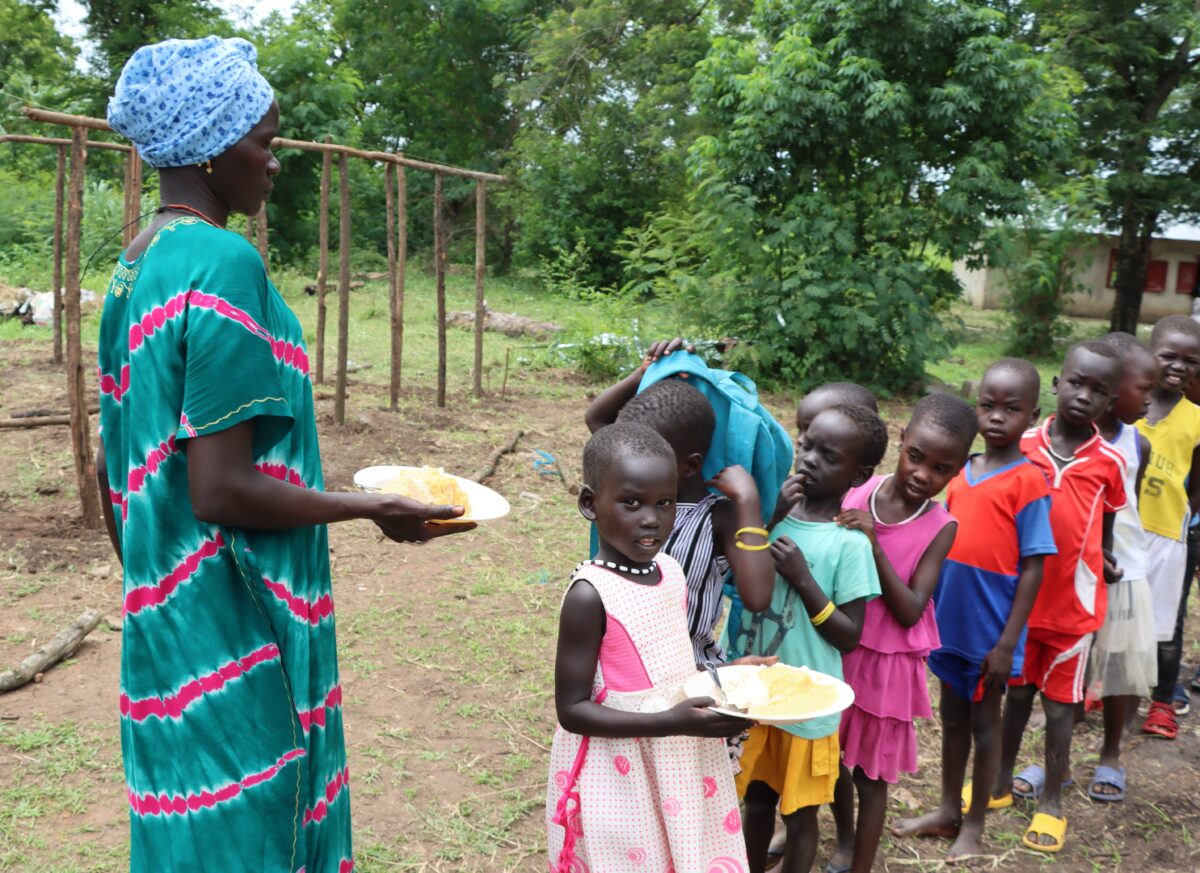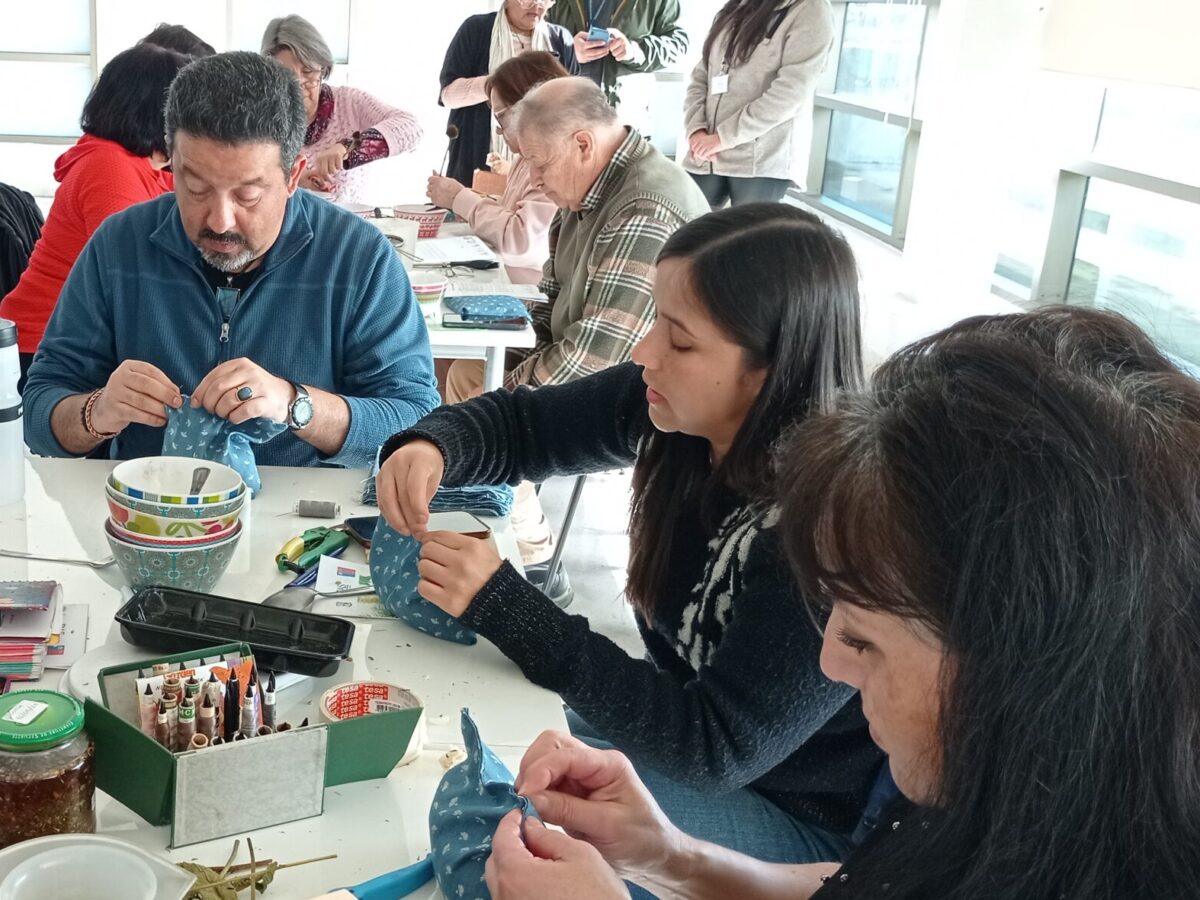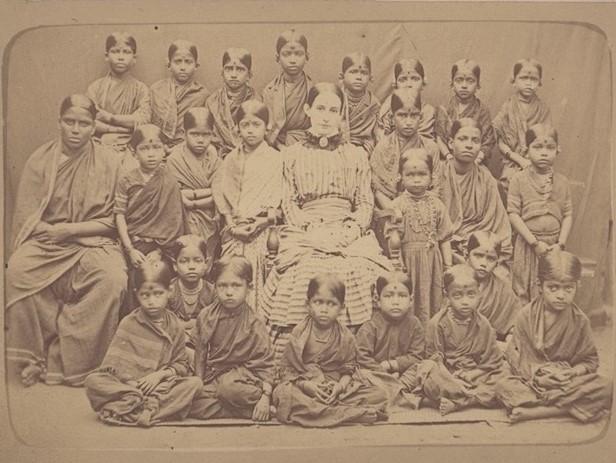Several people dressed in white stand in front of the building. Clothes are drying on a clothesline. If you look closely, you can see another person on a deck chair at the left corner of the house, behind a standing man in a dark shirt. This photo was pasted by Dr. Hermann Bay, the third missionary doctor of the Basel Mission in China, in his annual report of the hospital in Kayin-tschu (today a district of the city of Meizhou) from 1917 with the title "Sanatorium for Chinese on the Shin lyong san".
Shin lyong san is located at an altitude of about 1250 meters in the northeast of Guangdong Province. While the city of Kayin-tschu, 20 kilometers away, had a warm and humid climate, the nearby mountains were mild and the temperature never rose above 25 degrees. Early on, the Basel missionaries realized that Shin lyong san was an ideal place for summer recreation. Several built simple cottages there for themselves and their families. Likewise, wealthy Chinese took advantage of the beneficial effects of the fresh mountain air.
Pulmonary tuberculosis was common in China, and occasionally rich sick locals spent the summer in Shin lyong san on the advice of the mission doctors. Li A wui, the former assistant of the first missionary doctor from Basel, Dr. August Wittenberg, also fell ill with tuberculosis. He built himself a portable cottage on the mountain, only two by three meters in size. This remained even after the sanatorium was built and can be seen on the right of the picture. The impetus for building a lung sanatorium came from Christian Chinese who found relief or even healing from tuberculosis on the mountain. The project was largely financed and executed by locals, but medically managed by the Basel Mission. The Chinese with tuberculosis were to be cured by the air or recumbency cure common in Europe.
The picture shows the sanatorium still in early state of construction, neither the surrounding garden, nor the sheltered veranda, which were realized in later years, exist. Glass windows were not available. Therefore, a little wall with boards was built in front of the windows - low enough to let light into the house, and high enough to protect the interior from drafts. Nevertheless, even in this state the sanatorium was fully occupied by tuberculosis patients seeking recreation in the fresh air. Some of them became regulars, spending the summer months on the mountain every year from then on.
Text: Andrea Rhyn, historian and research assistant in the Mission 21 archives.






